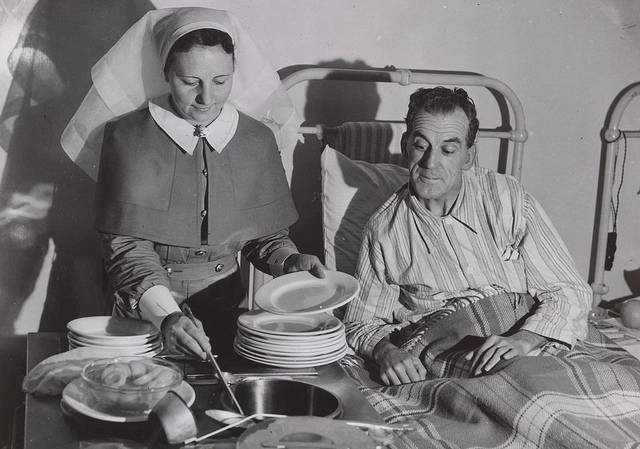Nurses represent the largest health profession in the United States. But, we have been experiencing a nursing shortage. Having enough nurses is critical for patient care. A new study published in the British Medical Journal reveals an increase in deaths the greater the number of hospital patients whom nurses must care for.
Specifically, of the 137 British hospitals studied, those with six or fewer patients per nurse in their medical wards had a 20 percent lower death rate than hospitals with 10 or more patients per nurse. Higher levels of health care support workers taking the place of nursing staff did not make up for fewer nursing staff, but rather led to higher death rates. The researchers could not prove cause and effect because this was an observational study, but they did see strong evidence of an association between nurse staffing levels and patient death rates.
Does your hospital have enough nurses? It’s hard to know. National data is not easily accessible, if it even exists. Massachusetts appears to be at the forefront of states collecting and reporting data on the quality and safety of hospital care, including nurse staffing. If you or someone you love is going into the hospital, you should consider looking into the adequacy of nursing staff. (No matter the nursing situation, it’s always helpful to have a health care buddy with you at the hospital and to prepare for your hospital stay. Here’s a checklist. It’s also good to know which hospitals Medicare has rated poor on patient safety.)
On a positive note, the supply of nurses is growing to meet significant demand. A report by the Department of Health and Human Services’ Health Resources and Services Administration (HRSA) finds that we are educating many more nurses. Consequently, we are seeing a dramatic increase in our supply of both registered nurses (RNs) and licensed practical nurses (LPNs), which HRSA projects will outpace national demand by 2o25. However, some states will still see serious shortfalls in RNs and LPNs.
There were just shy of three million registered nurses in the U.S. in 2012. By 2025, the number is expected to grow by one-third to almost 4 million registered nurses. Yet, the demand is only expected to grow by one-fifth to 3.5 million RNs. However, there is still expected to be a shortfall of RNs in 16 states, 10 in the west, four in the south and two in the northeast. Arizona, North Carolina and Colorado will experience the greatest need for RNs.
There were almost three-quarters of a million licensed practical nurses in the U.S. in 2012. By 2025 the number is expect to grow by more than one-third to almost one million LPNs. And, as with RNs, the demand is not expected to grow by quite as much. There will still be a shortfall of LPNs in 22 states, 10 in the west, five in the south, five in the northeast and two in the mid-west. Maryland, North Carolina and Georgia will experience the greatest need for LPNs.
NB: HRSA’s models rely on an assumption that use of nursing care and patterns for delivering nursing care will not change. With new emerging health care delivery systems they could very well change. And, if they do, an increased reliance on nurses is very possible.










